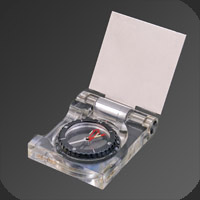
| The VUA geological compass : History |
| introduction |
| history |
| the compass |
| pictures |
| drawings |
| acknowledgments |
| disclaimer |
| contact |
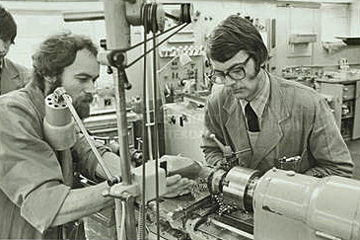
instrument making at the VUA in the seventies |
At ca. 1970, the department of Earth Sciences at the Vrije Universiteit, Amsterdam (VUA) had the choice of using two compasses for students. The existing Silva compass, principally designed for orienteering, and the brand new, up-dated 'Clar-Breithaupt' geological compass (soon to be copied by the more economical East German 'Clar Freiberger'), a sophisticated, but relatively expensive instrument. The Clar method allowed the compass to simultaneously measure the dip and dip direction of a plane and plunge and plunge direction of a lineation with its inclination hinge attached to the turning axis of the compass lid. |
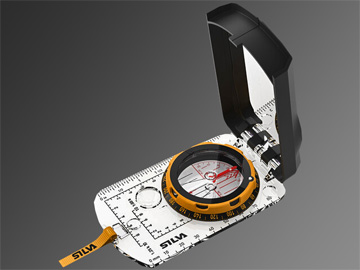
Silva Expedition S Kompas |
The Silva or similar Suunto, compasses are still good, solid instruments, but mainly designed for determining geographic orientation. It lacks an accurate tool to orient the compass horizontally and vertical during measuring strike and dip respectively. However, they can be used adequately for geological purposes after attaching a little round level to the surface of the compass baseplate. Neither of these instruments at that time met our requirements. The Silva or Suunto has the advantage of a liquid-damped compass, but is cumbersome, because it didn’t allow the dip or plunge of respectively foliation and lineation to be acquired during one measurement. |
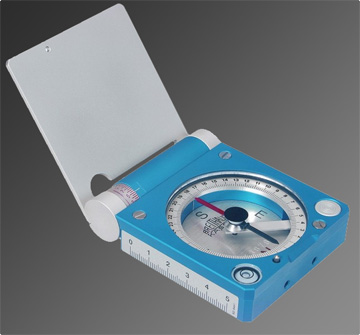
Breithaupt Cocla Stratum Compass |
The Clar Breithaupt is a beautiful instrument, but too vulnerable to wear and tear during fieldwork and the air-damped needle provides a comparatively unstable platform for fast measurements, and more important, way too expensive for our students. So we decided (1970-71 ), with the consent of the Earth Sciences Faculty Board, to give it a try and produce our own geological compass. It had to meet the following requirements:
|
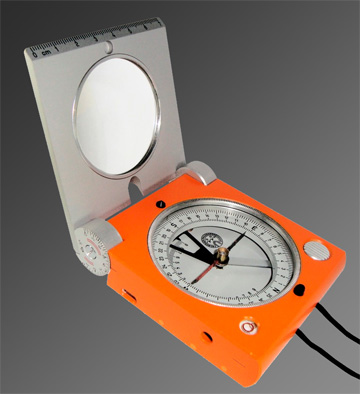
Freiberger Geological Stratum Compass w-Mirror |
During the following 4- 5 years the produced compass was tried and progressively modified following
the comments of a sizable group of graduate geology students at VUA using the new instrument during
field work in the metamorphic tectonites of the Precambrian shield of Southern Finland. |
|